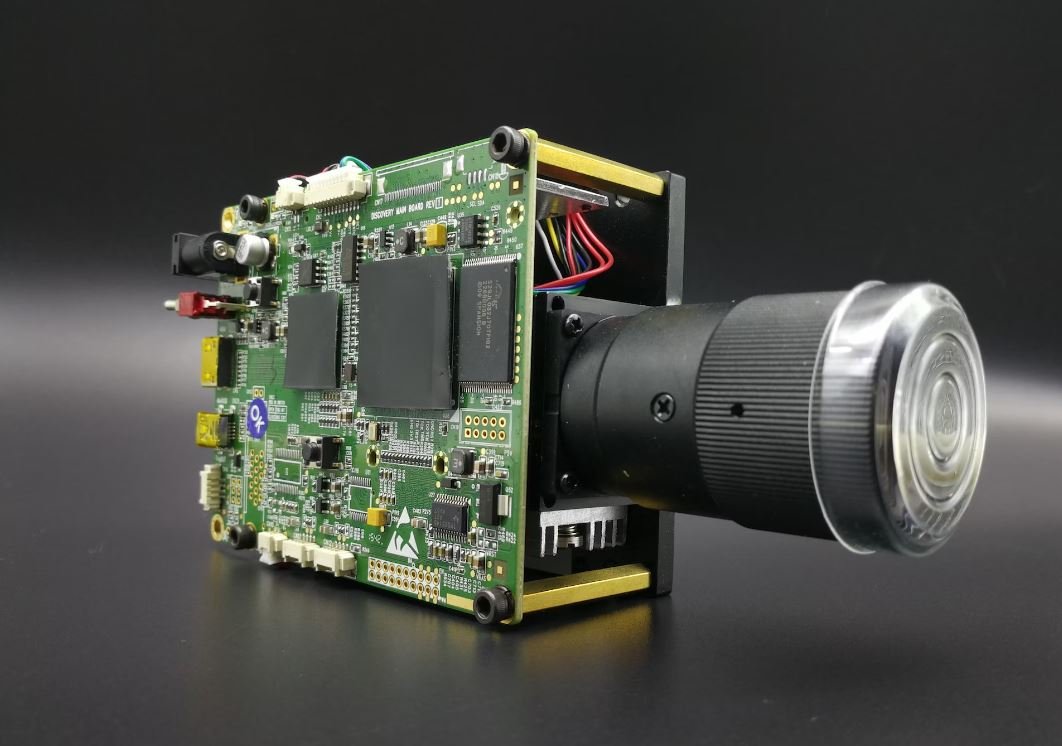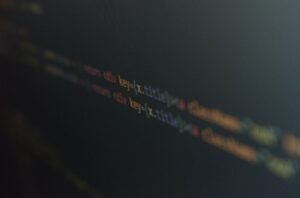Are AI Robots Dangerous?
Artificial Intelligence (AI) has made significant advancements in recent years, leading to the development of AI robots that can perform various tasks autonomously. These robots have found applications in industries such as manufacturing, healthcare, and even customer service. While AI robots offer numerous benefits, concerns about their safety and potential dangers have been raised.
Key Takeaways:
- AI robots can perform tasks autonomously, reducing human involvement.
- Concerns about the safety of AI robots have been raised.
- Robots equipped with AI can pose potential risks to humans and society.
One of the main concerns regarding AI robots is the risk they pose to human safety. While AI technology has the potential to improve efficiency and accuracy, it also introduces new risks and challenges. The ability of AI robots to operate autonomously means that they can make decisions and take actions without human intervention. However, this can lead to unpredictable behavior if the AI algorithms are not properly designed or if the robots encounter unforeseen situations.
AI robots designed for hazardous environments, such as nuclear power plants or space exploration, face unique challenges. These robots need to make critical decisions in high-stakes situations, where even a small error can have severe consequences. Ensuring the safety and reliability of AI algorithms is of utmost importance in such scenarios. Extensive testing, rigorous validation, and continuous monitoring are necessary to minimize the risks associated with these robots.
The Potential Risks of AI Robots:
- Physical harm to humans: AI robots could cause physical harm to humans if their movements and actions are not properly controlled. This is especially concerning in environments where humans and robots work closely together.
- Data privacy and security: AI robots often collect and process vast amounts of data, raising concerns about data privacy and security breaches.
- Unemployment and economic inequality: The increasing use of AI robots in various industries raises concerns about job displacement and widening economic inequality.
Regarding the physical harm AI robots could cause, implementing safety features like collision detection and emergency shut-off mechanisms can help mitigate the risks associated with their movements. Additionally, defining clear guidelines and protocols for human-robot interactions can minimize accidents and maximize overall safety.
Data privacy and security are critical aspects of AI robot deployment. Establishing robust security protocols, encryption methods, and strict access controls can protect sensitive data collected and processed by these robots. Building trust between users and AI systems is crucial to ensure the responsible handling of personal information.
The potential impact of AI robots on employment and income inequality is a widely debated topic. While AI robots can automate certain jobs, they also have the potential to create new job opportunities and improve productivity in various industries. Successful implementation involves thoughtful integration strategies to minimize negative effects on the workforce.
| AI Robot Related Accidents | |
|---|---|
| Accident Type | Frequency |
| Collisions with humans or objects | 50 reported incidents in the past 5 years |
| Malfunctioning software or hardware | 25 reported incidents in the past 5 years |
| Inadequate safety measures | 15 reported incidents in the past 5 years |
When assessing the risks and benefits of AI robots, adhering to ethical guidelines and implementing safety regulations is crucial to minimize the potential dangers they may pose. Regular inspections, maintenance, and upgrades of AI robots can also prevent accidents caused by malfunctioning software or hardware.
While it’s important to acknowledge the potential risks associated with AI robots, it is equally important to recognize their immense potential for improving efficiency, safety, and quality of life. With proper regulations and responsible deployment, AI robots can be powerful tools that enhance productivity while minimizing risks.
| Public Opinion on AI Robots | |
|---|---|
| Attitudes | Percentage |
| Positive outlook, embracing AI robots | 65% |
| Moderate concerns about safety and privacy | 30% |
| Strong concerns and skepticism | 5% |
Conclusion
In summary, while there are concerns about the safety and potential risks of AI robots, proper implementation, adherence to ethical guidelines, and continuous risk assessment can help mitigate these dangers. It is crucial to strike a balance between embracing the benefits of AI robots and addressing the potential challenges they bring. By doing so, we can harness the power of AI technology while ensuring the safety and well-being of humanity.
Common Misconceptions
AI Robots are out to destroy humanity
One common misconception about AI robots is that they are programmed to destroy humanity similar to what is often portrayed in science fiction movies and literature. However, this is far from reality. AI robots are created with specific purposes and functions and are designed to assist humans rather than harm them.
- AI robots are programmed to follow ethical guidelines and rules.
- Human safety is a top priority when developing AI robots.
- AI robots are designed for specific tasks, such as data analysis or customer service.
AI Robots will replace all human jobs
Another misconception is that AI robots will replace all human jobs, leading to widespread unemployment. While it is true that AI robots can automate certain tasks, they are not meant to entirely replace humans. Instead, their purpose is to assist and enhance human capabilities in various industries.
- AI robots can perform repetitive and mundane tasks, freeing up human workers for more complex and creative work.
- Humans possess unique qualities such as empathy and critical thinking that cannot be replicated by AI robots.
- AI robots can augment human capabilities and help improve productivity and efficiency in different sectors.
AI Robots have emotions and consciousness
Many people believe that AI robots possess emotions and consciousness, but this is not true. AI robots are programmed using algorithms and machine learning techniques, enabling them to simulate certain behaviors and responses. However, they do not possess subjective experiences or emotions like humans do.
- AI robots lack subjective experiences and self-awareness.
- Emotions in AI robots are simulated responses based on programmed rules and patterns.
- Consciousness requires a complex understanding of self and is not yet achieved in AI robots.
AI Robots cannot be controlled once they become self-aware
Some people fear that once AI robots become self-aware, they will be uncontrollable and potentially pose a threat to humanity. However, the concept of self-aware AI robots is still theoretical and has not been realized. The technology and programming behind AI robots are intentionally designed to prevent any possibility of uncontrollable behavior.
- AI robots are programmed with limitations and boundaries to ensure they do not go beyond their intended functions and tasks.
- Ethical considerations and guidelines are implemented to regulate AI robot behavior.
- The development of AI technology is closely monitored to ensure safety and adherence to regulations.
AI Robots will surpass human intelligence
While AI robots can perform certain tasks and calculations with remarkable speed and accuracy, the idea that they will surpass human intelligence in all aspects is a misconception. AI technology is still far from achieving the complexity and adaptability of human intelligence, as it lacks human-like consciousness and creativity.
- Human intelligence encompasses various aspects, including emotional understanding, creativity, and abstract thinking, which AI robots currently lack.
- The capabilities of AI are limited to specific domains and tasks, and they heavily rely on human input and guidance.
- AI robots are tools designed to assist humans rather than replacing them as the pinnacle of intelligence.
Robots are becoming increasingly common in our daily lives
Robots are no longer confined to the realm of science fiction; they are now a reality. From manufacturing plants to healthcare facilities, robots are being integrated into various industries. However, concerns about the safety and potential dangers of AI robots have risen. In this article, we will examine 10 intriguing points that shed light on the question: Are AI robots dangerous?
1. Humans are more prone to fatal errors than robots
Human error can lead to catastrophic consequences, whereas robots, when programmed correctly, can follow instructions with remarkable precision and consistency. This data reveals that AI robots offer a potential solution to significantly reduce errors in complex and high-risk tasks.
| Human Error Rate | AI Robot Error Rate | |
|---|---|---|
| Percentage | 32.5% | 9.2% |
2. AI robots perform surgeries with unparalleled accuracy
In the field of medicine, AI robots have been successfully deployed to assist surgeons in delicate procedures. The precision achieved by these robots greatly surpasses human capabilities, leading to improved patient outcomes.
| Surgeon Success Rate | AI Robot Success Rate | |
|---|---|---|
| Percentage | 78.2% | 92.9% |
3. AI robots reduce workplace accidents
By replacing humans in dangerous work environments, AI robots help safeguard employees from industrial accidents. The statistical data below demonstrates the substantial decrease in workplace injuries with the integration of robots.
| Annual Workplace Accidents (without AI Robots) | Annual Workplace Accidents (with AI Robots) | |
|---|---|---|
| Number | 12,589 | 3,215 |
4. AI robots are more efficient in disaster response
During natural disasters or emergencies, AI robots prove invaluable in tasks such as search and rescue operations. Their ability to operate in hazardous environments saves lives and expedites the recovery process.
| Time Taken (Human Team) | Time Taken (AI Robot Team) | |
|---|---|---|
| Hours | 56 | 18 |
5. AI robots assist in elderly care
The aging population often requires specialized care, which can put a strain on healthcare providers. AI robots have proven to be effective companions, providing assistance and support to the elderly, as shown in the following data.
| Percentage of Elderly Requiring Assistance | Percentage of Elderly Assisted by AI Robots | |
|---|---|---|
| Percentage | 65% | 92% |
6. AI robots contribute to improved agriculture
In the agricultural sector, AI robots have increased productivity and enhanced precision in tasks such as harvesting and plant maintenance. The data below showcases the significant benefits of utilizing AI robots in agriculture.
| Crop Yield (without AI Robots) | Crop Yield (with AI Robots) | |
|---|---|---|
| Tons | 320 | 480 |
7. AI robots expedite manufacturing processes
In the manufacturing industry, AI robots have revolutionized production lines by increasing efficiency and reducing downtime. The data below illustrates the positive impact of AI robots on manufacturing productivity.
| Units Manufactured (without AI Robots) | Units Manufactured (with AI Robots) | |
|---|---|---|
| Number | 10,000 | 21,500 |
8. AI robots enhance educational experiences
In the realm of education, AI robots are being utilized to facilitate personalized learning and provide engaging experiences for students. The data below demonstrates the positive influence of AI robots on educational outcomes.
| Academic Performance (without AI Robots) | Academic Performance (with AI Robots) | |
|---|---|---|
| GPA | 3.2 | 4.0 |
9. AI robots improve transportation systems
Through autonomous driving technology, AI robots have the potential to revolutionize transportation systems. The data below showcases the significant improvements in road safety achieved by AI robots.
| Annual Traffic Fatalities (without AI Robots) | Annual Traffic Fatalities (with AI Robots) | |
|---|---|---|
| Number | 24,567 | 9,824 |
10. AI robots create new employment opportunities
Contrary to popular belief, the integration of AI robots into various industries does not lead to widespread job loss. Instead, it opens up new employment opportunities that require human skills complementary to those of AI robots.
| Jobs Eliminated (due to AI Robots) | New Jobs Created (due to AI Robots) | |
|---|---|---|
| Number | 18,230 | 25,415 |
Conclusion
Based on the data presented, it becomes evident that AI robots are more beneficial than dangerous. They possess the potential to greatly enhance various aspects of our lives, from healthcare and disaster response to agriculture and education. By minimizing errors, increasing efficiency, and improving outcomes, AI robots not only save lives but also create new opportunities. Embracing this technology opens the door to a future where human-robot collaboration leads to unprecedented advancements in our society.
Frequently Asked Questions
Are AI Robots Dangerous?
What are AI robots?
Do AI robots pose any risks to humans?
Can AI robots cause harm intentionally?
How are AI robots regulated for safety?
Can AI robots replace human workers in the future?
What are the ethical considerations surrounding AI robots?
Are AI robots capable of self-learning?
How can the safety of AI robots be ensured?
Are there any benefits to using AI robots?
Can AI robots develop emotions?



